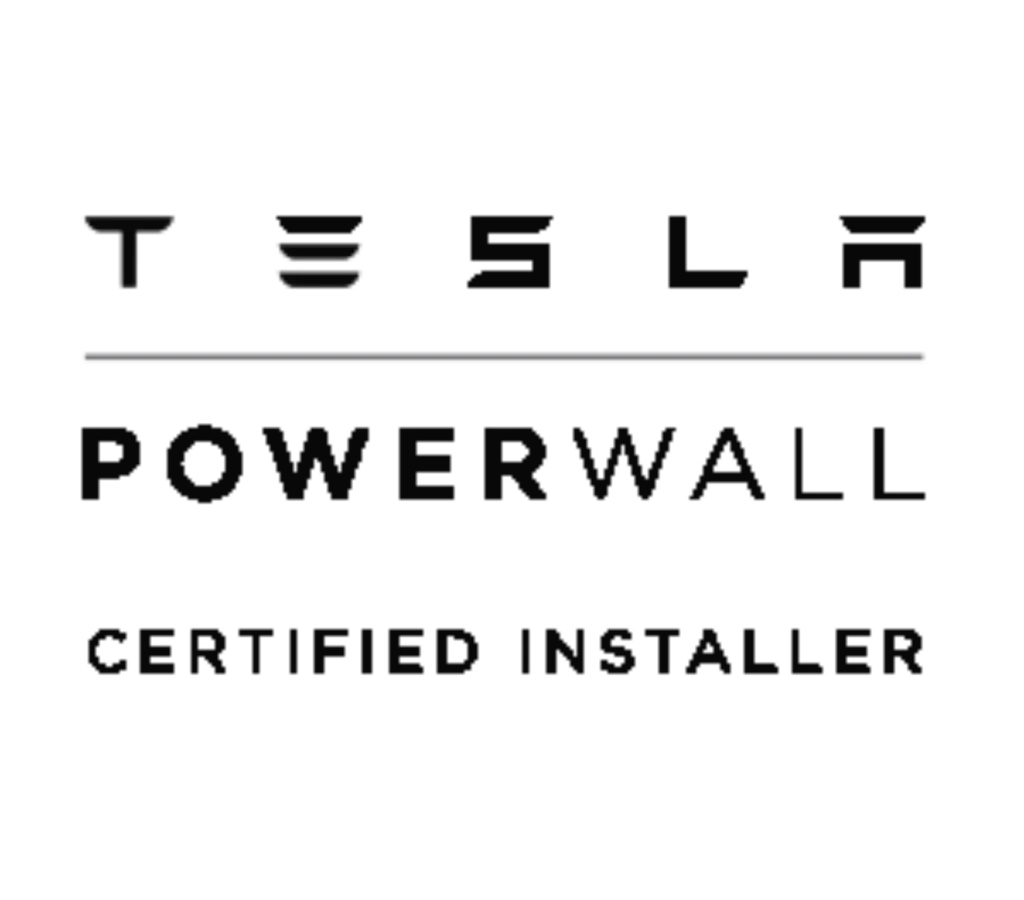Your home as an intelligent electrical ecosystem:
Quote Process
- Let us know if you’re interested, and we will provide a rough estimate remotely.
- A site visit is required to refine the quote and discuss sizing and design. Pricing is ultimately very site-dependent.
- As always, we are careful to discuss these systems’ benefits and limitations with all our customers.
FAQs
A smart electrical panel intelligently manages the power your home consumes, the solar production and most importantly the function of a battery storage system.
- Circuit-level monitoring and control via an app.
- Load prioritization for your batteries. E.g.: You can set some circuits to be automatically shut off when the battery(s) state of charge drops below, say, 70%. This allows for greater load control and longer battery life during a power outage.
- Greater design flexibility with solar and battery sizing.
It depends on three things:
1) your budget
2) what loads you want backed up, and
3) how many days of autonomy would be ideal. We take the time to dig into system design with you so the system meets your expectations.
Note that weather is a significant variable when calculating how long a battery bank will last if paired with solar energy. If you lose power during a cold, clear snap, you could power your backed-up loads for days; if you lose power during a powerful storm, the solar may have minimal capacity to recharge your batteries.
1) your budget
2) what loads you want backed up, and
3) how many days of autonomy would be ideal. We take the time to dig into system design with you so the system meets your expectations.
Note that weather is a significant variable when calculating how long a battery bank will last if paired with solar energy. If you lose power during a cold, clear snap, you could power your backed-up loads for days; if you lose power during a powerful storm, the solar may have minimal capacity to recharge your batteries.
Generally speaking, one battery is adequate only for emergent loads. Two batteries allow you to add 1-2 larger loads, and 3+ can start to potentially be whole-home backup systems, especially with solar panels and good sun exposure.
We have an outstanding worksheet you can use to see how different load configurations will impact your daily kWh consumption. Another handy trick is to look at your electric bill: most have 12-24 months of average daily kilowatt-hour (kWh) usage data. This can give you a sense of what your whole home uses, and you can compare that to 10-13.5 kWhs of output afforded by a single battery.
We have an outstanding worksheet you can use to see how different load configurations will impact your daily kWh consumption. Another handy trick is to look at your electric bill: most have 12-24 months of average daily kilowatt-hour (kWh) usage data. This can give you a sense of what your whole home uses, and you can compare that to 10-13.5 kWhs of output afforded by a single battery.
No, batteries can be standalone systems. As of January 1st, 2023, these systems are also eligible for the 30% tax credit. Furthermore, batteries can be added to existing solar PV systems.
While there is a world of off-grid solar + storage systems, we only design and install grid-connected systems.
Roughly estimated, one battery costs about $20K, two batteries $30K, three batteries $40K, and so on. Depending on the manufacturer, each battery can afford between 10 and 13.5 kWhs of backup.
The 30% Federal Tax Credit is good through 2032 and then steps down to 26% in 2033 22% in 2034, and there will be no incentive starting in 2035. It is a dollar-for-dollar reduction in the income taxes that a person or company claiming the credit would otherwise pay the federal government. There is no sales tax in Washington on battery backup installations.
Battery warranties have 3 components: the number of cycles, years, and degradation. Disconnects, combiners, and other “balance of system” components also come with warranties. Your salesperson will consult with you about the relative advantages and disadvantages between the manufacturers.
The Enphase 5P battery is warranted for 15 years or 600 cycles and is guaranteed to maintain an energy capacity of at least 60%.
The Tesla Powerwall three is warranted for ten years, with unlimited cycles, and is guaranteed to maintain an energy capacity of at least 70%.
The Enphase 5P battery is warranted for 15 years or 600 cycles and is guaranteed to maintain an energy capacity of at least 60%.
The Tesla Powerwall three is warranted for ten years, with unlimited cycles, and is guaranteed to maintain an energy capacity of at least 70%.
While all the batteries we use here are lithium-ion, there are currently two competing Li-ion battery chemistries in the PV and EV world: nickel manganese cobalt (NMC) or lithium iron phosphate (LFP).
NMC has historically been in favor by Tesla due to its power density. However, this chemistry has two severe drawbacks: a more significant, though still slight, chance of thermal runaway (fire) and cobalt. While resource extraction of any kind has its costs, cobalt mining is a particularly evil industry, both toxic and rife with human rights abuses. This chemistry is found in most devices we use daily and most electric vehicles.
LFP is less toxic, lasts longer, and is marginally safer. It is also less sensitive to the state of charge (i.e., whether the battery is sitting at 100% charge or completely discharged). Due to this, LFP is quickly becoming the dominant chemistry for residential applications since space and weight are less critical than, say, your phone or your car.
Enphase batteries use LFP; Tesla has not yet confirmed the chemistry for the Powerwall 3.
NMC has historically been in favor by Tesla due to its power density. However, this chemistry has two severe drawbacks: a more significant, though still slight, chance of thermal runaway (fire) and cobalt. While resource extraction of any kind has its costs, cobalt mining is a particularly evil industry, both toxic and rife with human rights abuses. This chemistry is found in most devices we use daily and most electric vehicles.
LFP is less toxic, lasts longer, and is marginally safer. It is also less sensitive to the state of charge (i.e., whether the battery is sitting at 100% charge or completely discharged). Due to this, LFP is quickly becoming the dominant chemistry for residential applications since space and weight are less critical than, say, your phone or your car.
Enphase batteries use LFP; Tesla has not yet confirmed the chemistry for the Powerwall 3.
Both NMC and LFP batteries are recyclable and, in some cases, able to be refurbished. This is a nascent industry that is ramping up dramatically worldwide. The Inflation Reduction Act (IRA) has a clause that automatically qualifies recycled EV battery materials as American-made, a designation that comes with a host of tax incentives. This is initiating rapid investment in both research and factories.
Washington state recently passed legislation that requires all battery-containing products to participate in a “stewardship plan” starting in 2027.
Washington state recently passed legislation that requires all battery-containing products to participate in a “stewardship plan” starting in 2027.
Batteries have three functionalities: self-consumption, load shifting, and backup during an outage.
Self-consumption makes sense in an environment with unfavorable net metering policies. With net metering intact, there is no financial incentive to do this with your system.
Load shifting allows you to discharge the batteries during the time of day when your electricity is the most expensive. This does not make sense since we have yet to have Time of Use (TOU) rate structures here. That being said, several local utility companies are running pilot TOU programs, and we may see that being rolled out in our region.
Currently, the primary rationale for energy storage is “resiliency” against harsh weather and power outages.
Self-consumption makes sense in an environment with unfavorable net metering policies. With net metering intact, there is no financial incentive to do this with your system.
Load shifting allows you to discharge the batteries during the time of day when your electricity is the most expensive. This does not make sense since we have yet to have Time of Use (TOU) rate structures here. That being said, several local utility companies are running pilot TOU programs, and we may see that being rolled out in our region.
Currently, the primary rationale for energy storage is “resiliency” against harsh weather and power outages.
Case Studies
Bellevue Storage + PV
• 30kWhs of backup with solar and a SPAN smart panel
• Partial home backup
• Expected autonomy: several days in winter; unlimited in summer
• Partial home backup
• Expected autonomy: several days in winter; unlimited in summer
Shahine Residence
• 27kWhs of backup with existing solar
• Partial home backup
• Expected autonomy 2-5 days in winter; unlimited in summer
• Great write-up here!
• Partial home backup
• Expected autonomy 2-5 days in winter; unlimited in summer
• Great write-up here!
Bainbridge Island Residence
• 27 kWhs of backup will solar and a SPAN smart panel
• Whole-home backup
• Expected autonomy: dependent on load usage in winter; unlimited in summer
• Whole-home backup
• Expected autonomy: dependent on load usage in winter; unlimited in summer
Bellevue Residence
• 54 kWhs of backup
• Partial home backup
• Expected autonomy
• Partial home backup
• Expected autonomy







